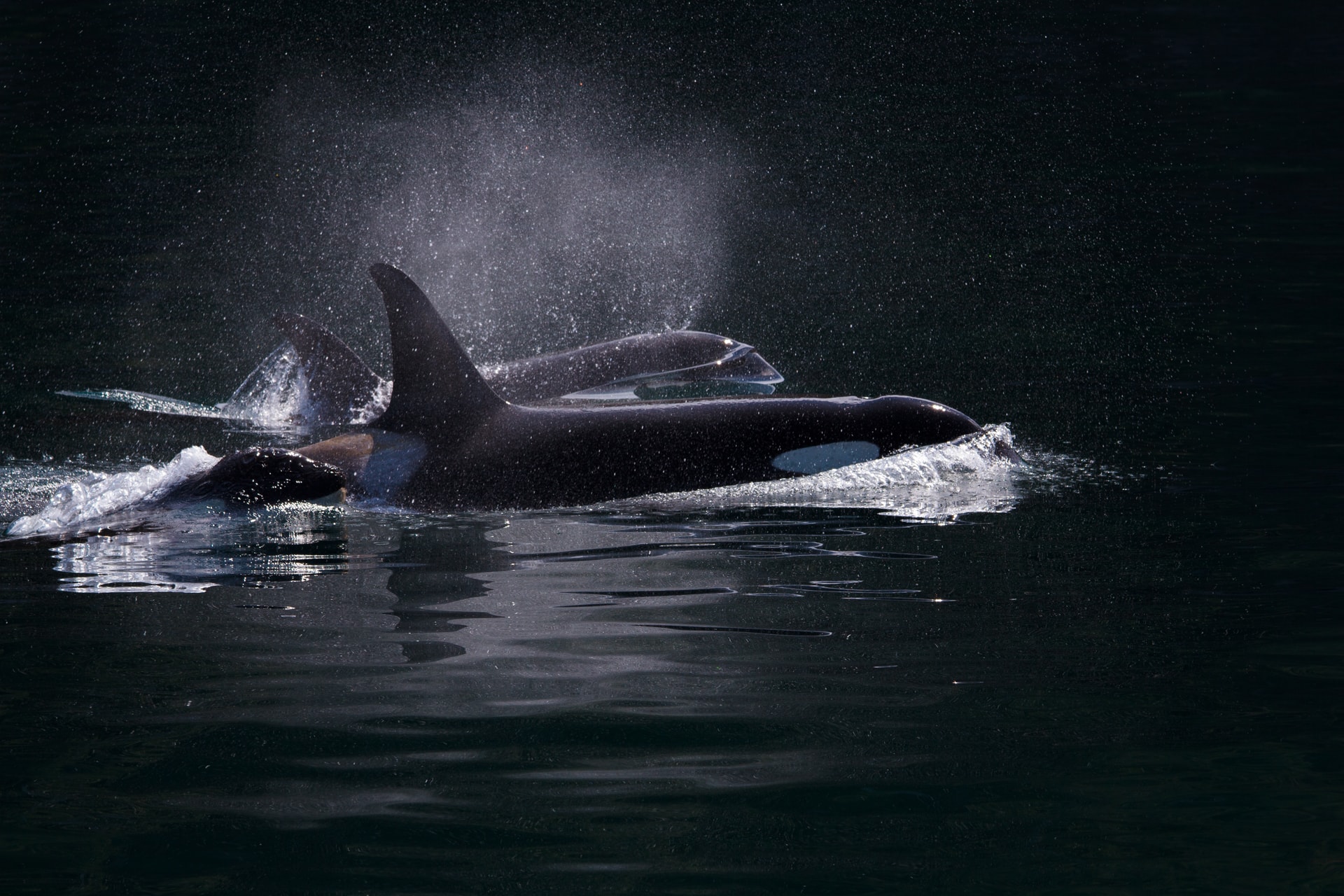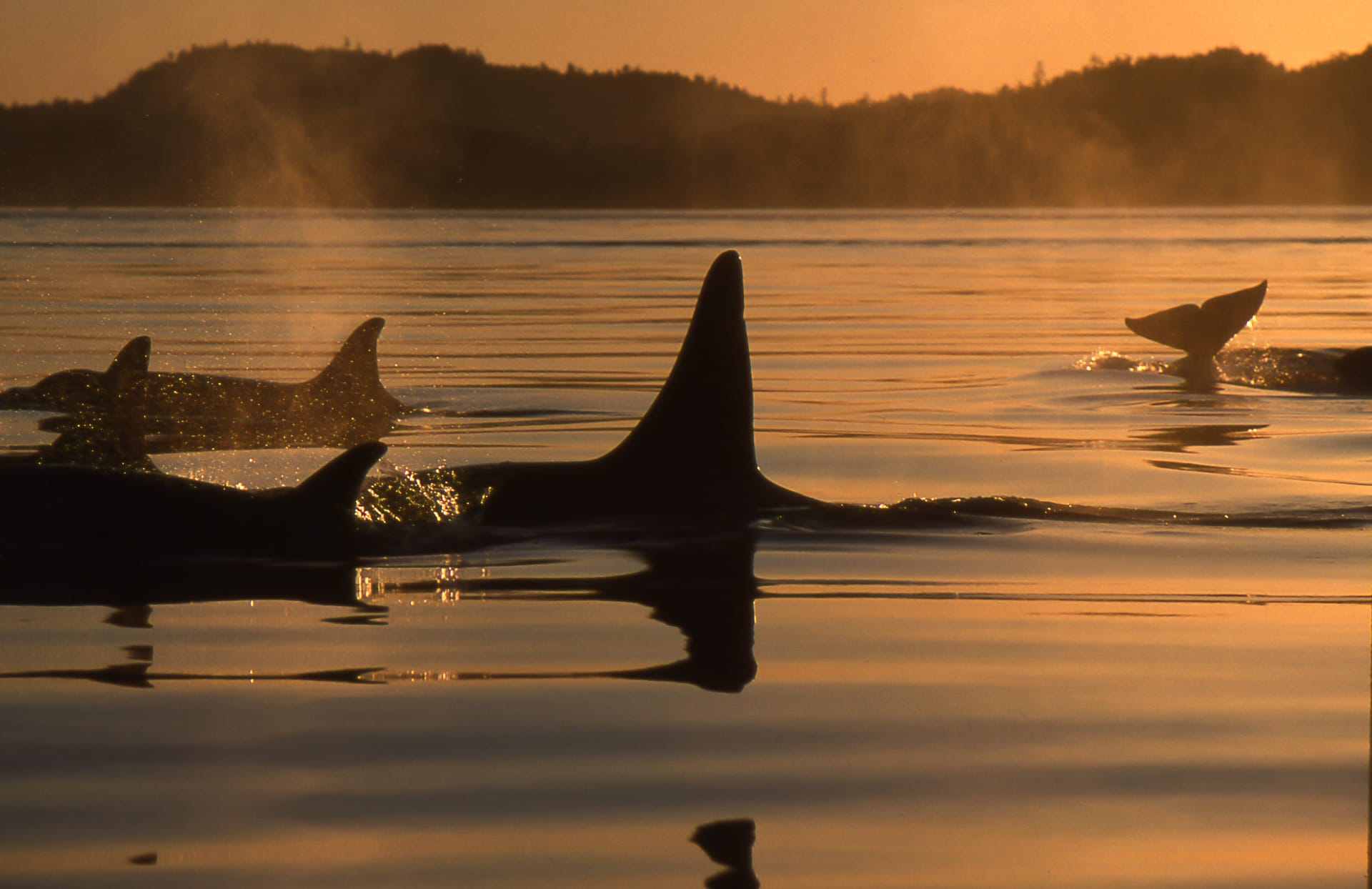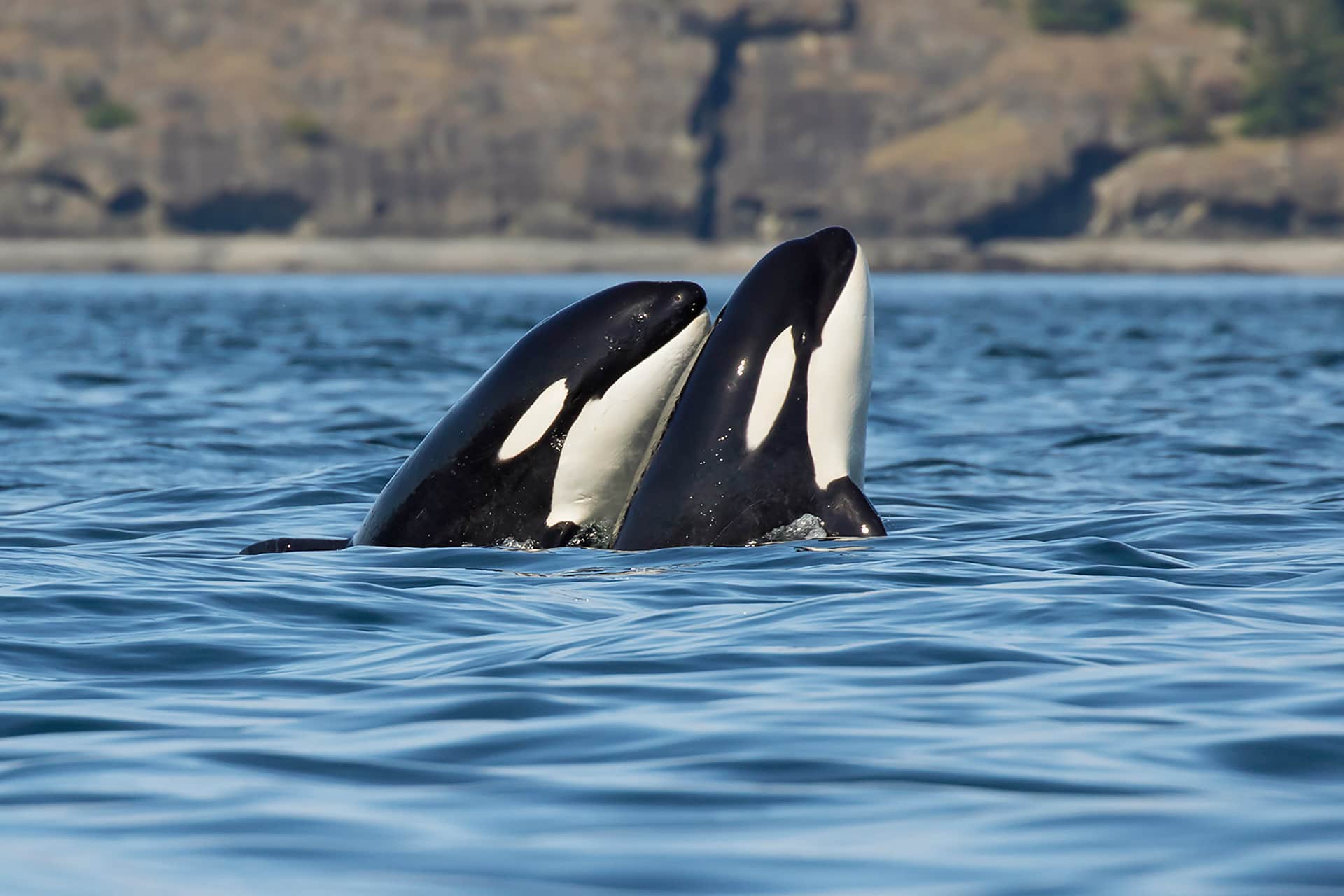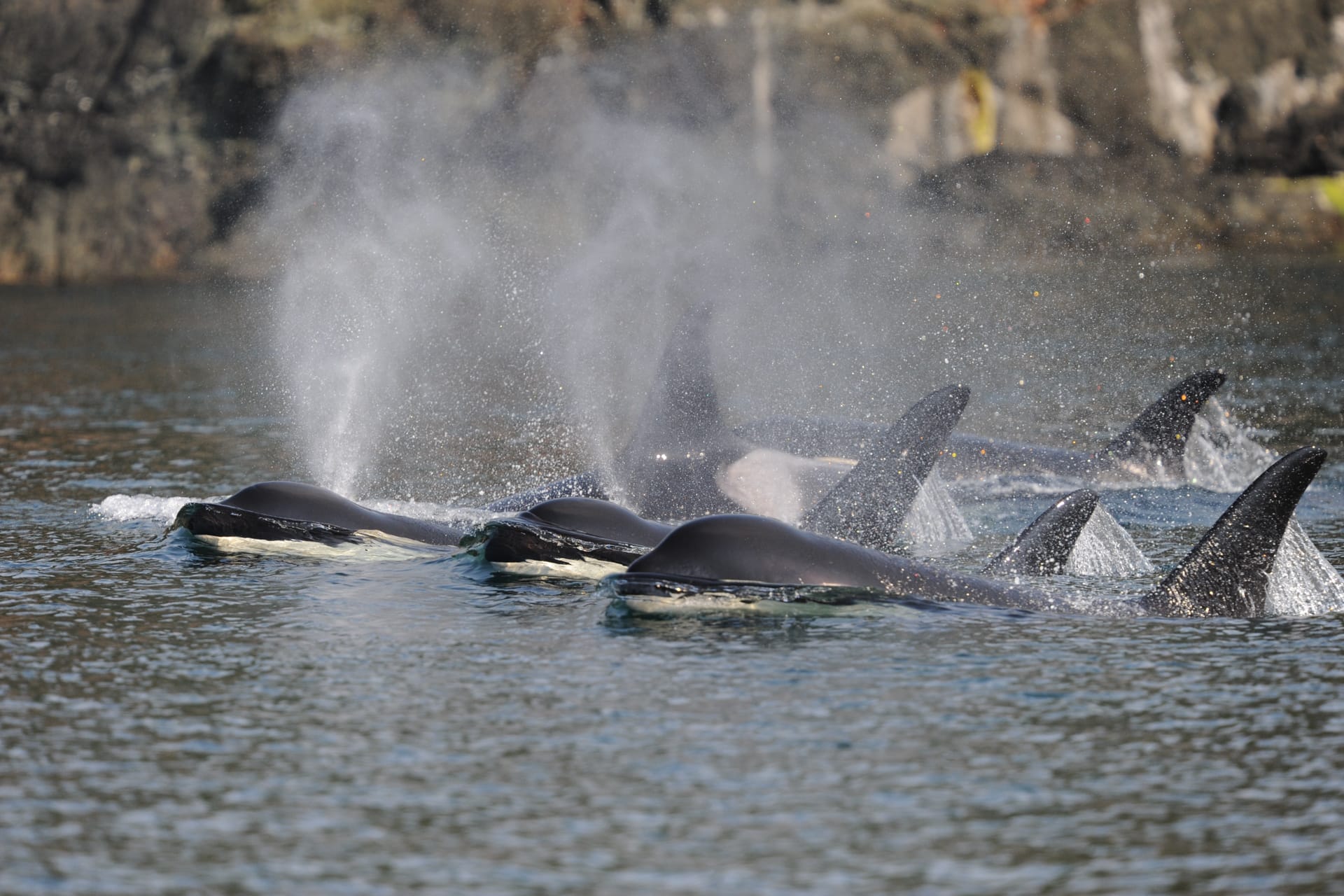
A new scientific paper published just prior to the global outbreak of Covid-19 explores the potential impact of cetacean morbillivirus infecting this endangered population of orcas.
Over 40 years of study of these whales using photographs, underwater microphones (hydrophones), video—and in recent years, drones—has captured important insights into the social, cultural and family lives and behaviors of this unique community.
We now know that Southern Resident males stay with their mother (the matriarch) for life, together with her daughters and their calves. This extended family structure, where grandmothers rule, ensures that inherited cultural knowledge gives these families the best possible opportunity for survival.
They share a common language with members of the other pods within their community (J, K and L pod), and meet to socialize, mate and bond. These close familial and cultural ties, together with their almost singular preference for Chinook salmon has always bound them to place, and to each other. Could this combination of associations now make them fatally susceptible to this virus?
Cetacean morbillivirus has been found in a number of species regularly found in the Salish Sea, such as harbor porpoise and Pacific white-sided dolphin. The virus is highly infectious, and can be passed between species.
Computer modeling has been used to predict coronavirus outbreaks in human populations and computer models were also used in this whale study. As with coronavirus, it’s not known precisely how long droplets of morbillivirus remain in the air. Therefore, in this study, the scientists chose to be conservative, and defined the time at which respiratory transmission is feasible between orcas, as when one or more surfaced simultaneously, or where one orca surfaced within one body length of another, before the previous animal was completely submerged.
After analysis of documented evidence of each of these close encounters, and noting which pod members were present, the scientists then estimated the number of potential contacts that could occur. They could then model the probability of one infected orca creating a cluster of cases within their extended family, and pod, and then by examining the wider social network across all three pods, could calculate the likelihood of transmission across the entire community.
Unfortunately, but not surprisingly, due to their highly social and interactive behavior, the model showed that this disease would likely infect 90% of this endangered population, leading to a high number of deaths.
A vaccine is considered one of the best ways we can control the spread of coronavirus in humans, but clearly this is not a viable option in wild, wide-ranging species like orcas, and was deemed ineffective in the modeling due to the high number of animals in the community of 70+ that would need to be vaccinated to control transmission.

Cetacean Morbillivirus / Stephens et. al.
The study notes that three factors make this population more susceptible to morbillivirus— poor nutrition, exposure to toxins such as PCBs, and inbreeding.
We know that their most immediate need is an abundant supply of fatty Chinook salmon. As is shown in human populations, poor diet leads to poor health outcomes, and the likelihood of recovery from disease becomes far more challenging. Plentiful salmon also increases the chance of successful pregnancies— the only hope for a future for this population.
Continued below...
The continued absence of these orcas from their traditional spring and summer feeding grounds in the Salish Sea clearly expresses the lack of wild Chinook salmon in this ecosystem.
This is unsustainable but entirely fixable. Allocating a portion of the annual Chinook (King) salmon catch to these whales is essential if we’re to save them from extinction.





